
People make choices all the time. The choices they make have consequences both for themselves and other people. Choosing not to do something is an option – but is also a choice.
Everybody experiences both successes and setbacks. The ways they choose to respond to these experiences can have a profound effect on their futures.
A person who achieves a success can celebrate for a while. They can then be complacent or use the success as a springboard towards continuous improvement.
A person who experiences a setback may need time to reflect. They can then choose to develop or dwell on the disappointment. They can be decisive and shape their futures or just drift.
Viktor Frankl described this approach in his book Man’s Search For Meaning. This described his harrowing journey through the Nazi concentration camps.
Surrounded by terror, he wondered how to make sense of this madness. Viktor concluded each person had the freedom to choose their attitude. He described this in the following way.
Man is not free from his conditions, but he is free to take a stand towards his conditions.
Everything can be taken from a man or a woman but one thing: the last of human freedoms to choose one’s attitude in any given set of circumstances, to choose one’s own way.
Chance played an enormous part in the death camps, of course, but each person faced choices each day. Viktor describes how it was vital to look alert and ready to work. New arrivals found the ordeal began when the railway trucks drew into the camp sidings.
Recalling his own experience, he describes joining a long line which shuffled towards an SS Officer. The Officer looked at each person and casually pointed to the left or the right. Viktor explains:
It was my turn. Somebody whispered to me that to be sent to the right side would mean work, the way to the left being for the sick and those incapable of work.
My haversack weighed me down a bit to the left, but I made an effort to walk upright.
The SS man looked me over, appeared to hesitate, then put both his hands on my shoulders, I tried very hard to look smart, and he turned my shoulders very slowly until I faced right, and I moved over to that side.
Viktor survived the Nazi camps, emigrated to America and worked as a psychiatrist. Working with suicidal people, he recognised the similarity between them and prisoners in the death camps. He recalled two prisoners who talked of taking their lives.
Both men used the typical argument: that they had nothing more to expect from life. The challenge was to show the men that life was still expecting something from them. Viktor continues:
We found, in fact, that for the one it was his child whom he adored and who was waiting for him in a foreign country. For the other it was a thing, not a person.
This was a scientist and had written a series of books which still needed to be finished. His work could not be done by anyone else, any more than another person could ever take the place of the father in his child’s affections.
A man who becomes conscious of the responsibility he bears toward a human being who affectionately waits for him, or to an unfinished work, will never be able to throw away his life. He knows the ‘why’ for his existence and will be able to bear almost any ‘how’.
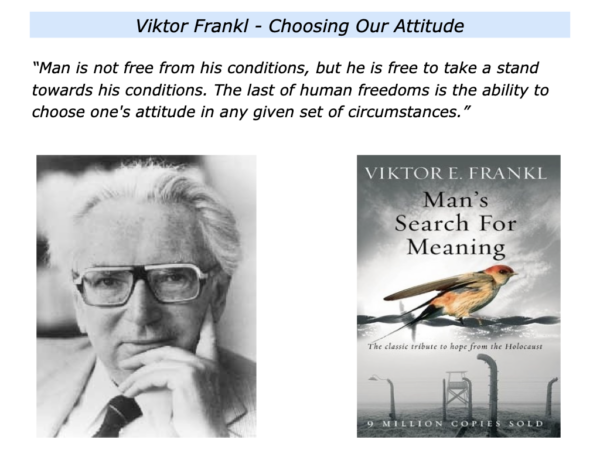
The choices and consequences approach is strongly influenced by decision making theory and existential psychology. It can be used to help people to explore and expand their potential options for achieving their goals.
This approach is sometimes used in what can be called Choice Therapy. It is strongly influenced by existential psychology, reality therapy, logotherapy and the work of some self-help groups. The following section explores how it can be translated into action.
The Choice Therapy Approach
Choice Therapy, like all schools of therapy, it is based on certain assumptions about people. These involves encouraging people yet also expecting them to take responsibility for shaping their futures.
Imagine that you are qualified to provide therapy sessions and that somebody has asked for your help. Here is an overview of some of the guidelines you may follow in your own way.
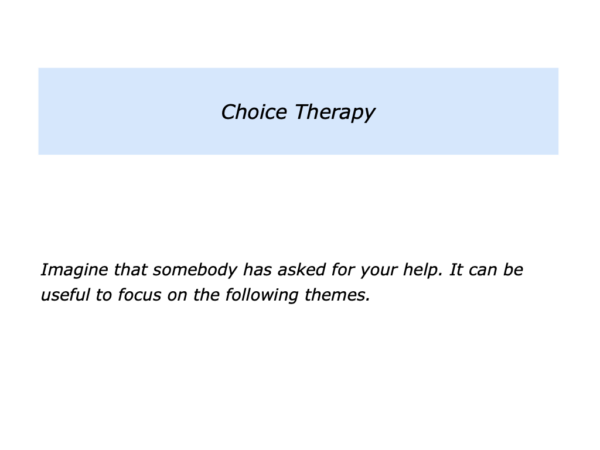
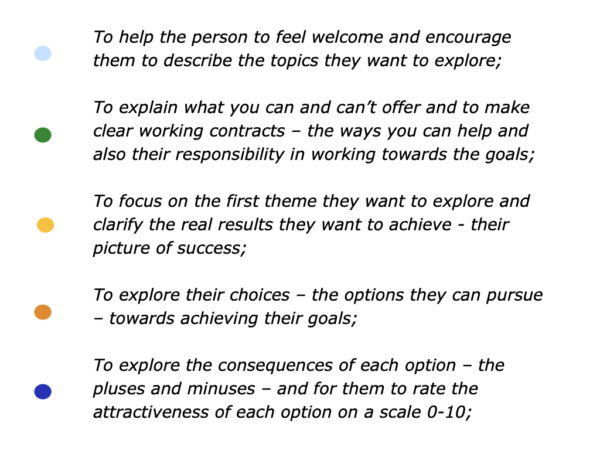
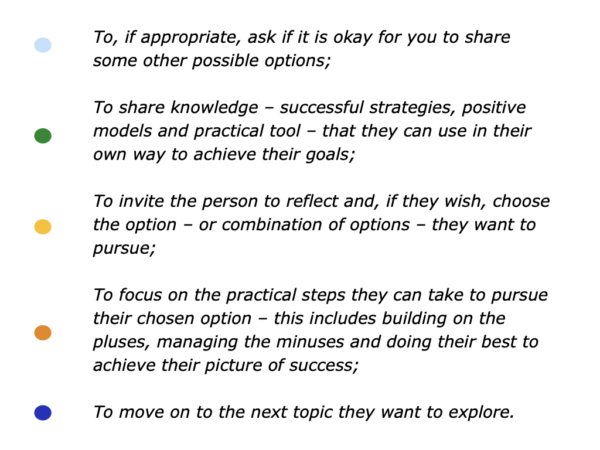
The Decision Making Approach
There are many ways to apply the choices and consequences approach. The following pages describe how it can be used when making decisions. You will, of course, apply these ideas in your own way.
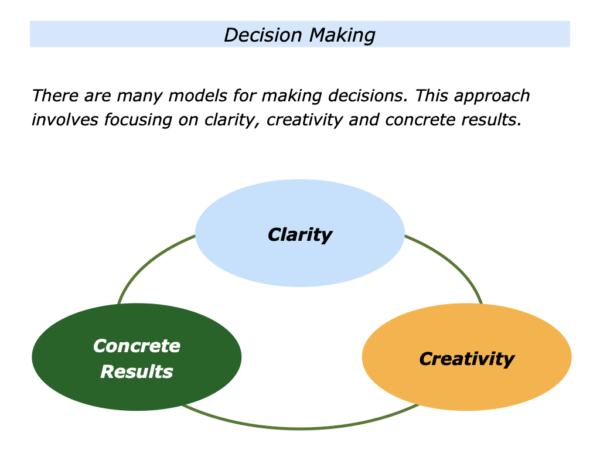
There are many models for making decisions. The following pages describe the Three C approach. This involves focusing on the following themes.
Clarity – This involves clarifying the real results you want to achieve;
Creativity – This involves clarifying the choices, consequences and creative solutions;
Concrete Results – This involves clarifying the action plan for achieving the desired results.
The following section provides a framework you can you use when going through these stages. It focuses on how to use the approach when tackling a specific challenge. But you can also adapt the approach to finding creative solutions or working towards a specific goal.
The key step involves clarity. It is vital to clarify the real results you want to achieve. This is the real ‘What’. This step also includes clarifying the benefits of achieving the goals.
The next step is to use your creativity to explore the possible ways to achieve the goals. This is the ‘How’. You can then follow your chosen route and do your best to achieve the desired concrete results. This is the ‘When’.
Here is a pack for making decisions. You will, of course, use it in your own way to work towards achieving your goals.
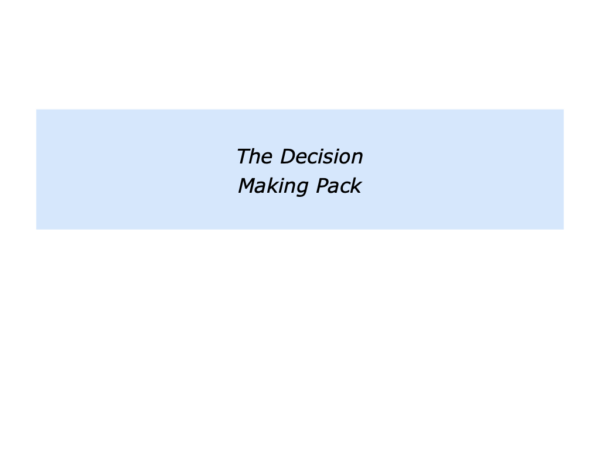
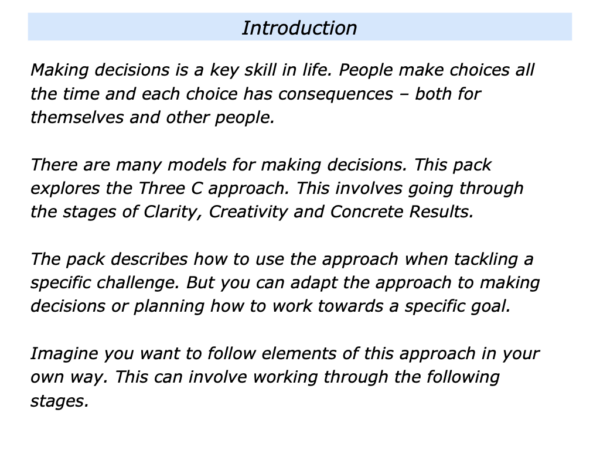
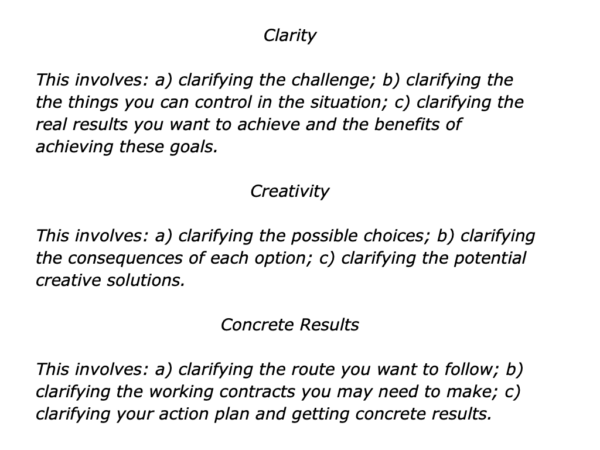
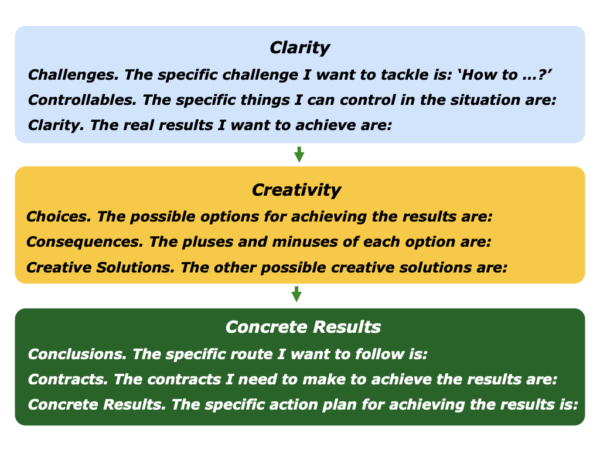
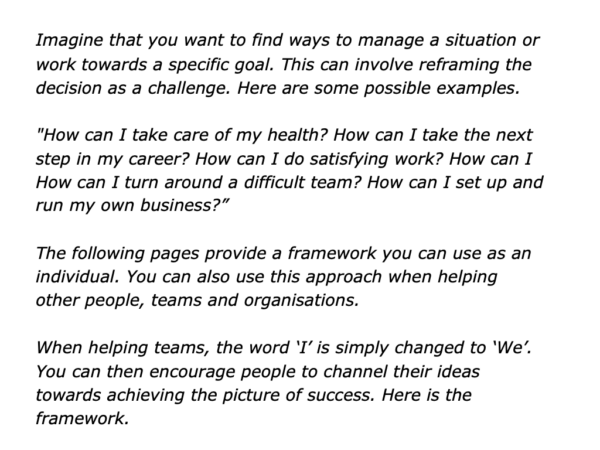
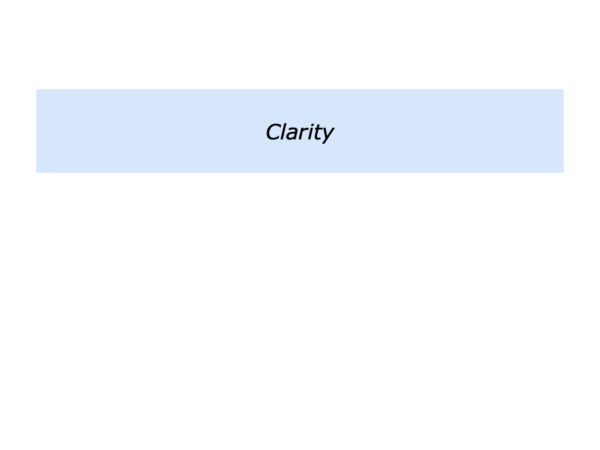
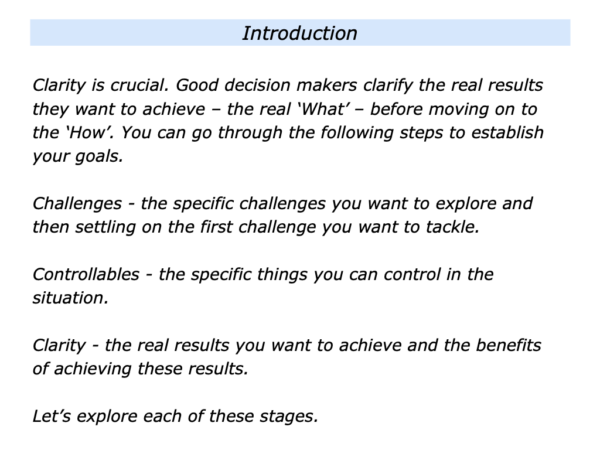
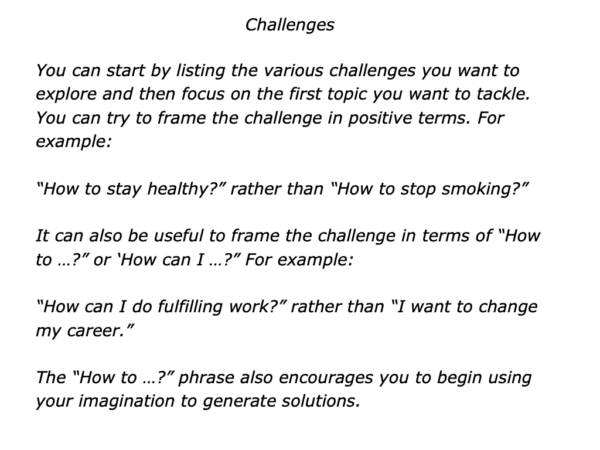
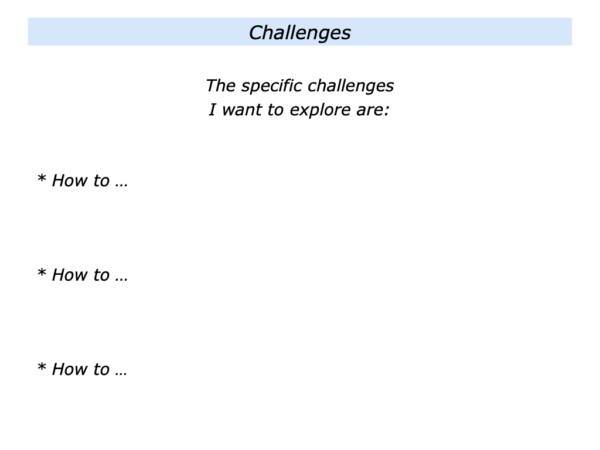
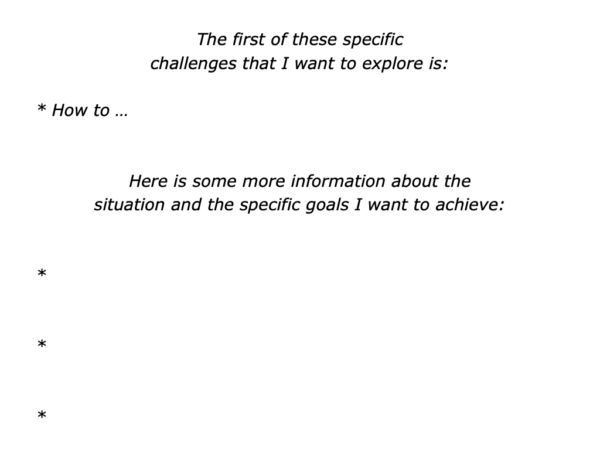
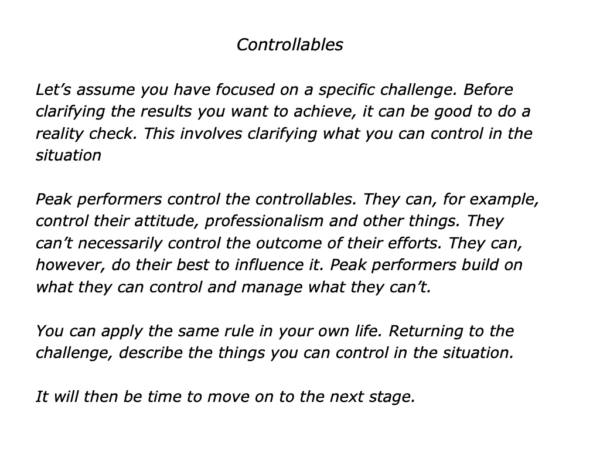
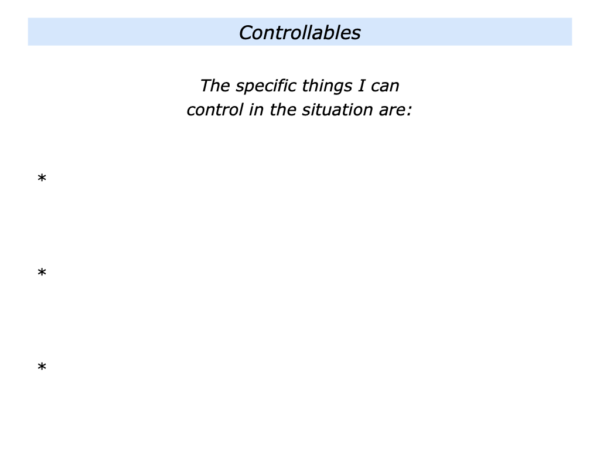
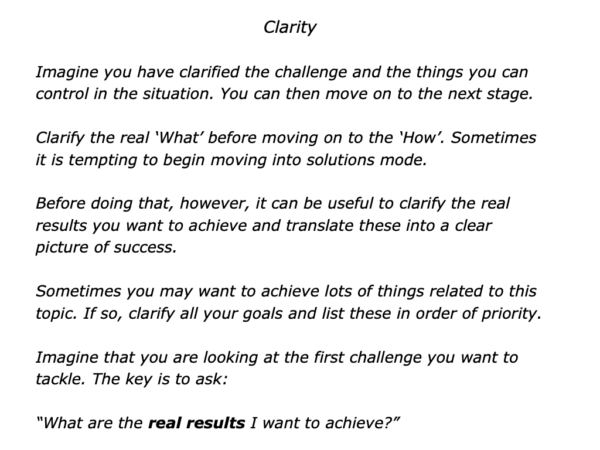
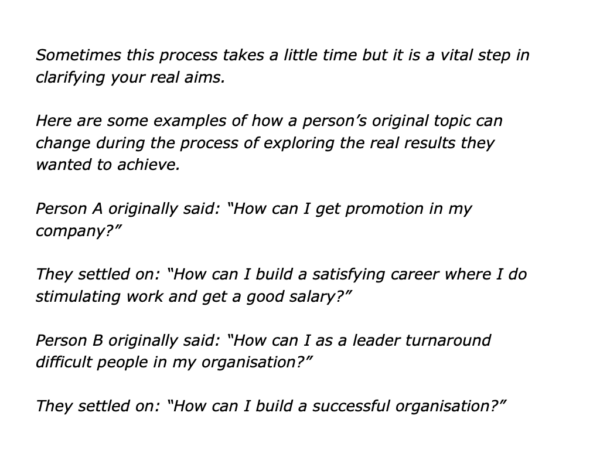
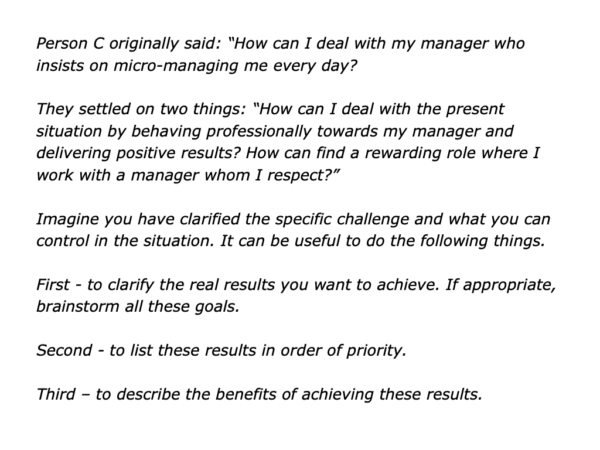
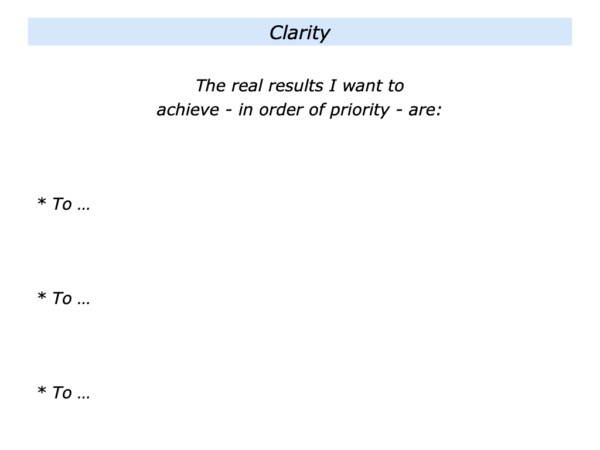
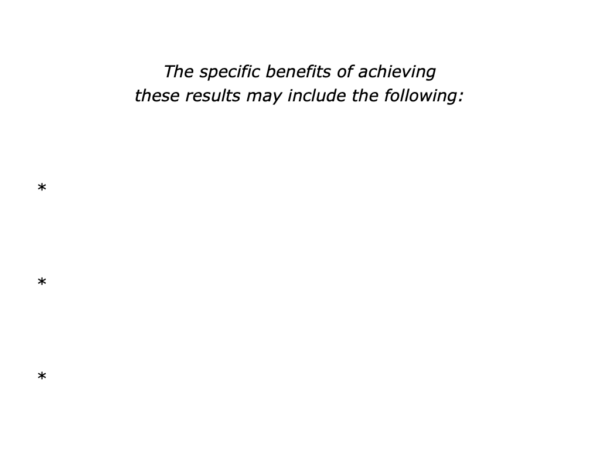
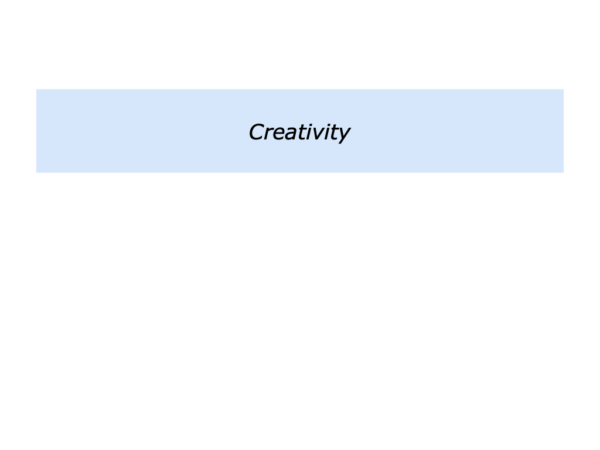
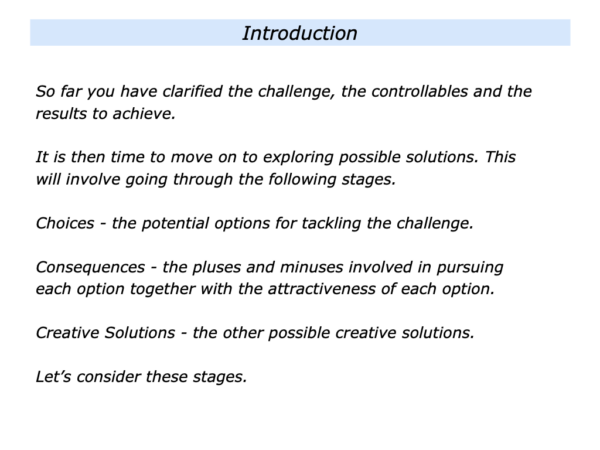
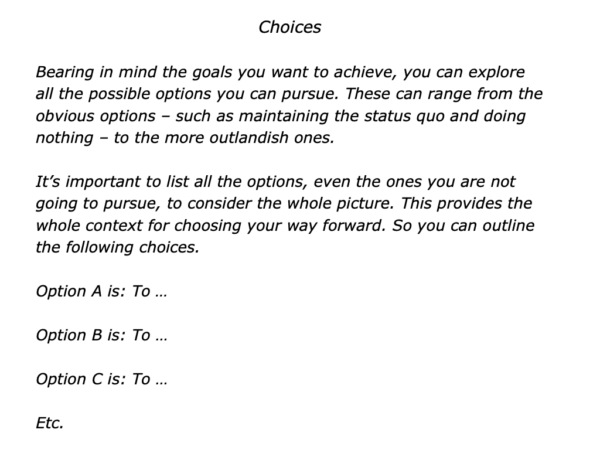
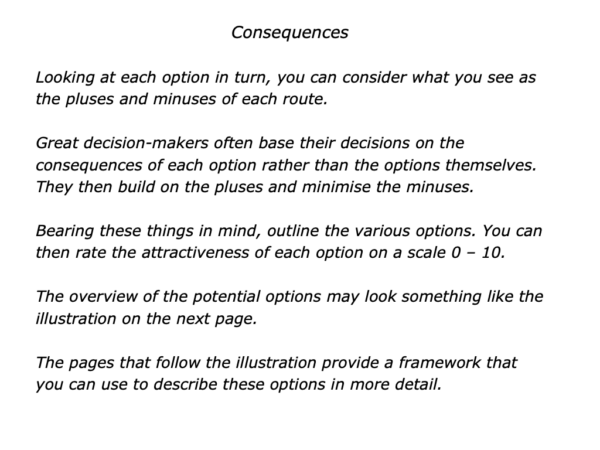
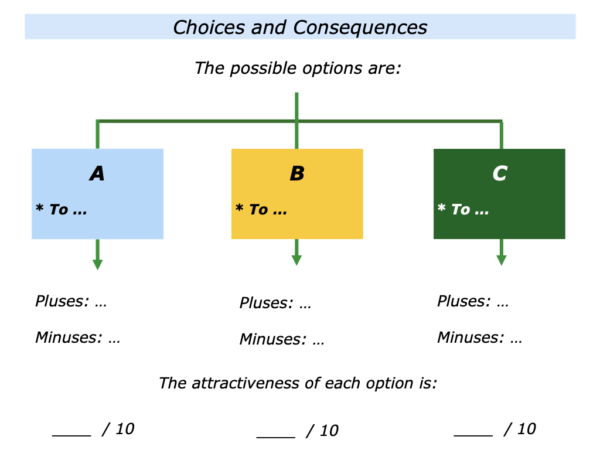
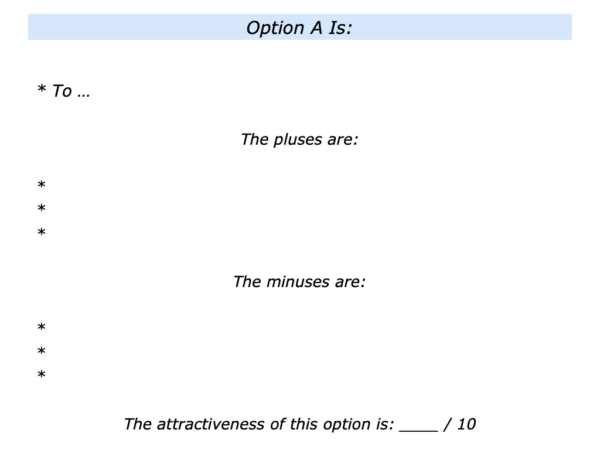
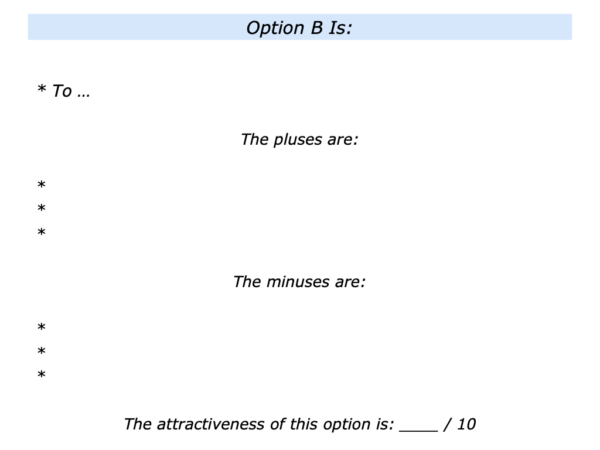
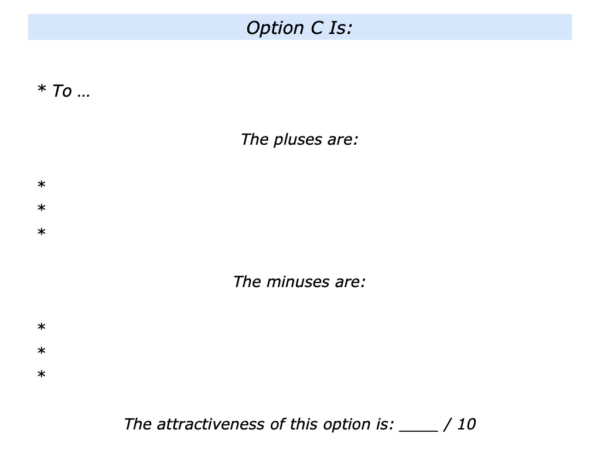
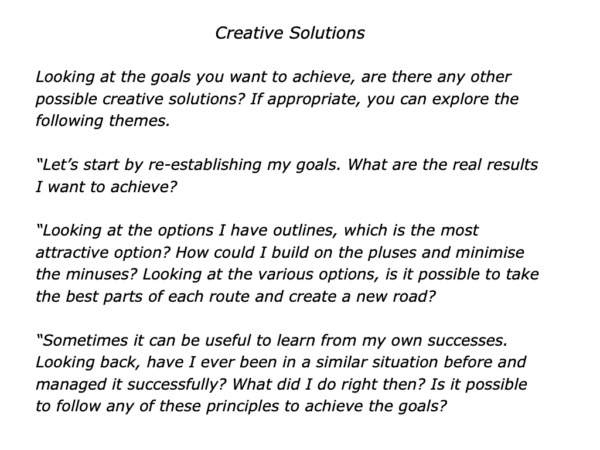
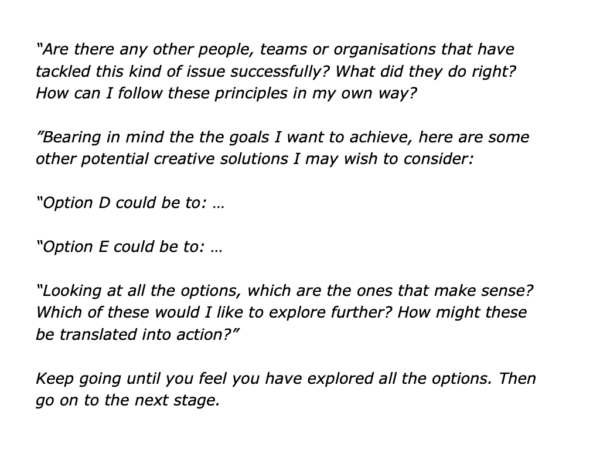
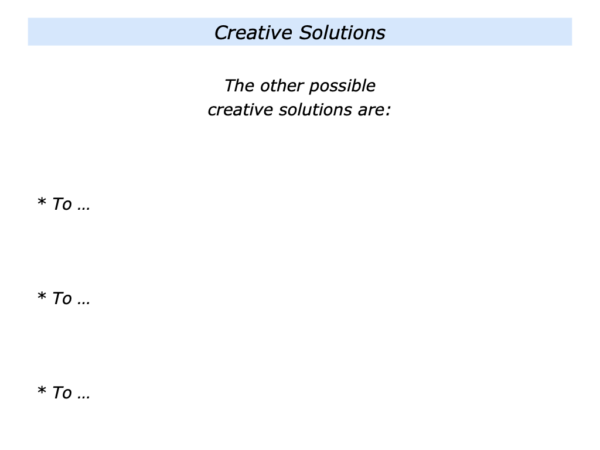

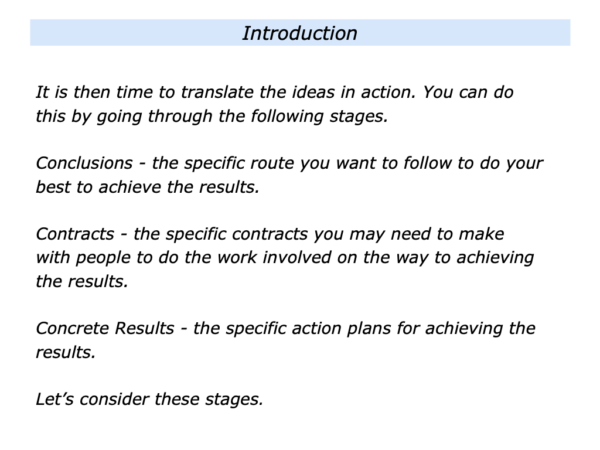
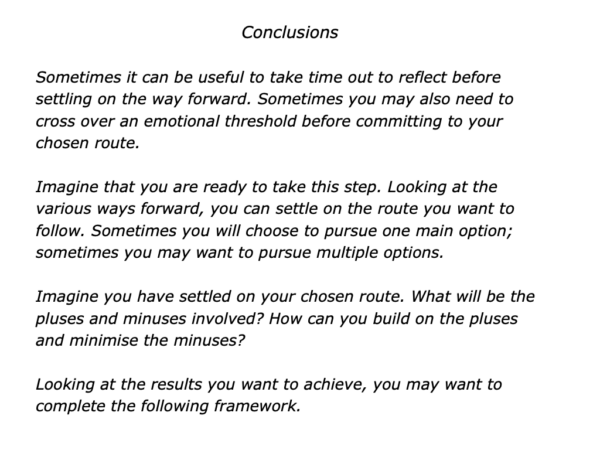
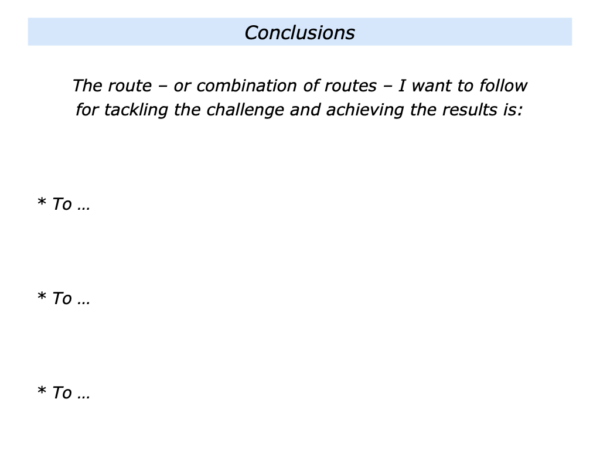
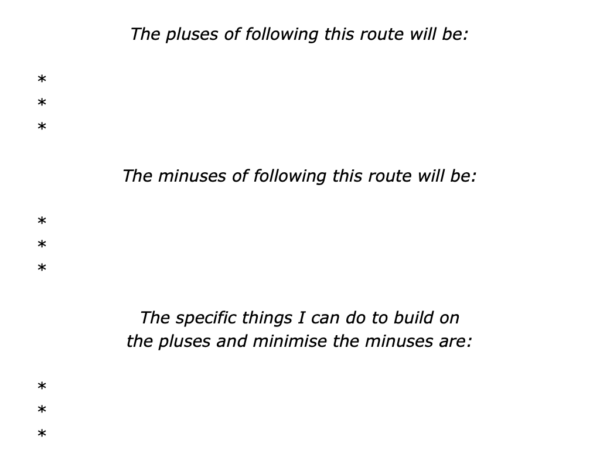
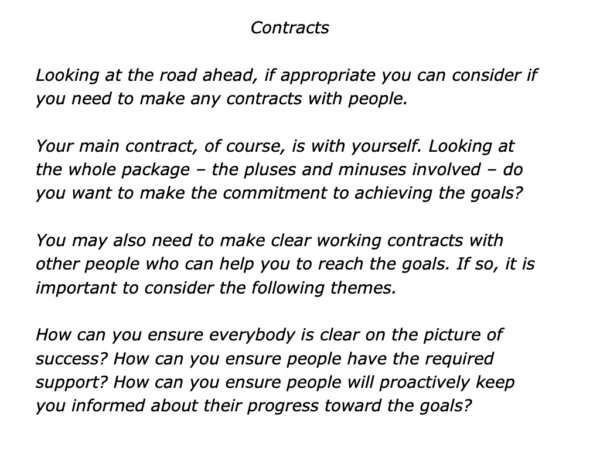
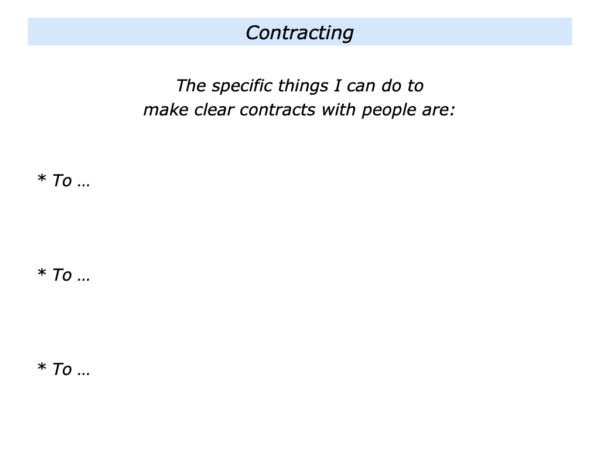
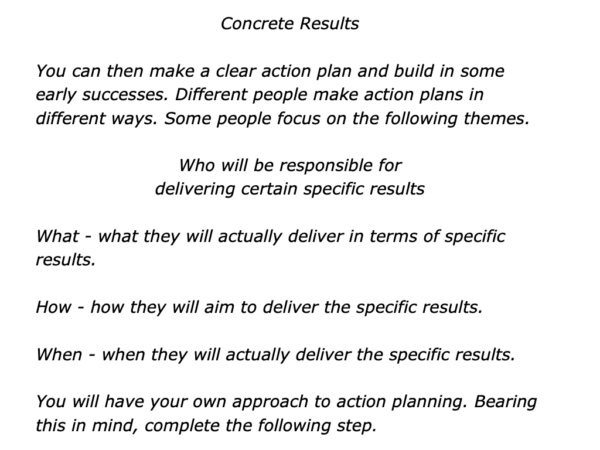
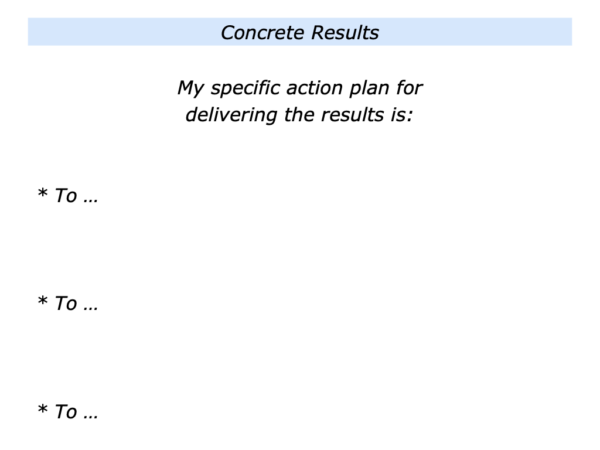
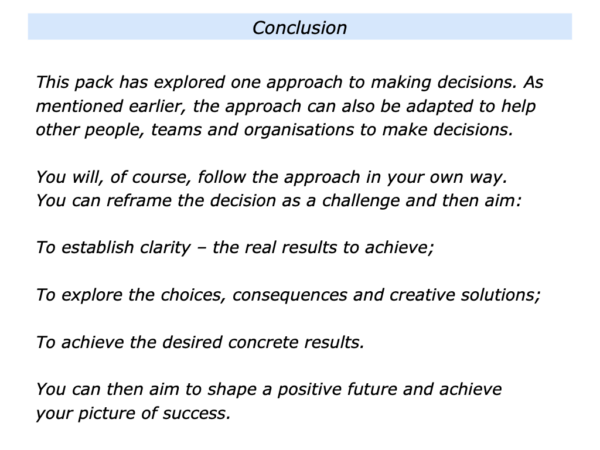
Let’s return to your own life and work. Looking ahead, can you think of a situation where you may want to follow elements of the choices and consequences approach? How can you do this in your own way?
If you wish, try tackling the exercise on this theme. This invites you to complete the following sentences.
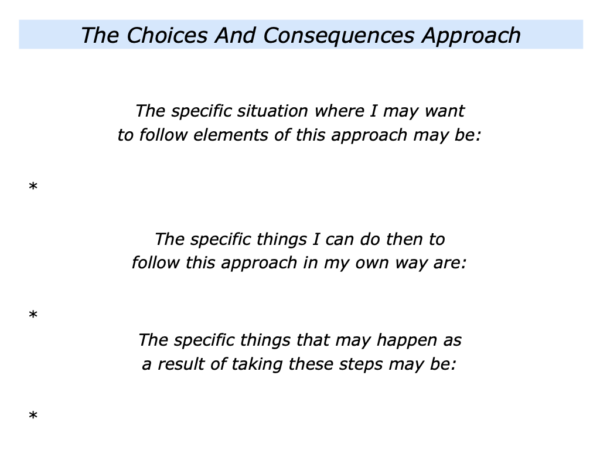






Leave a Reply